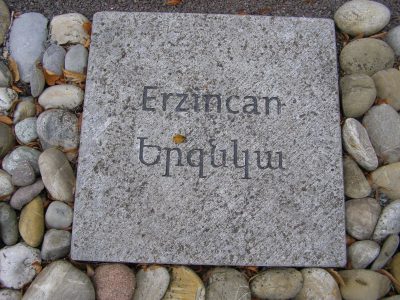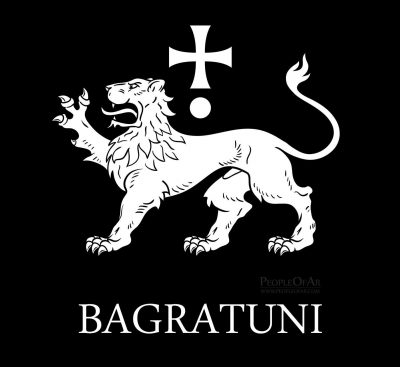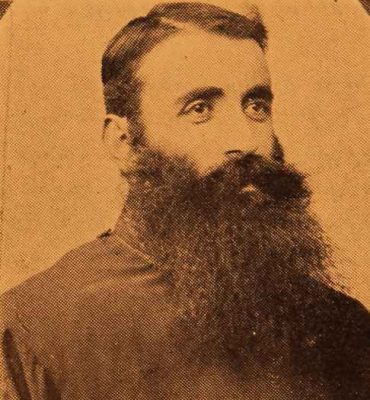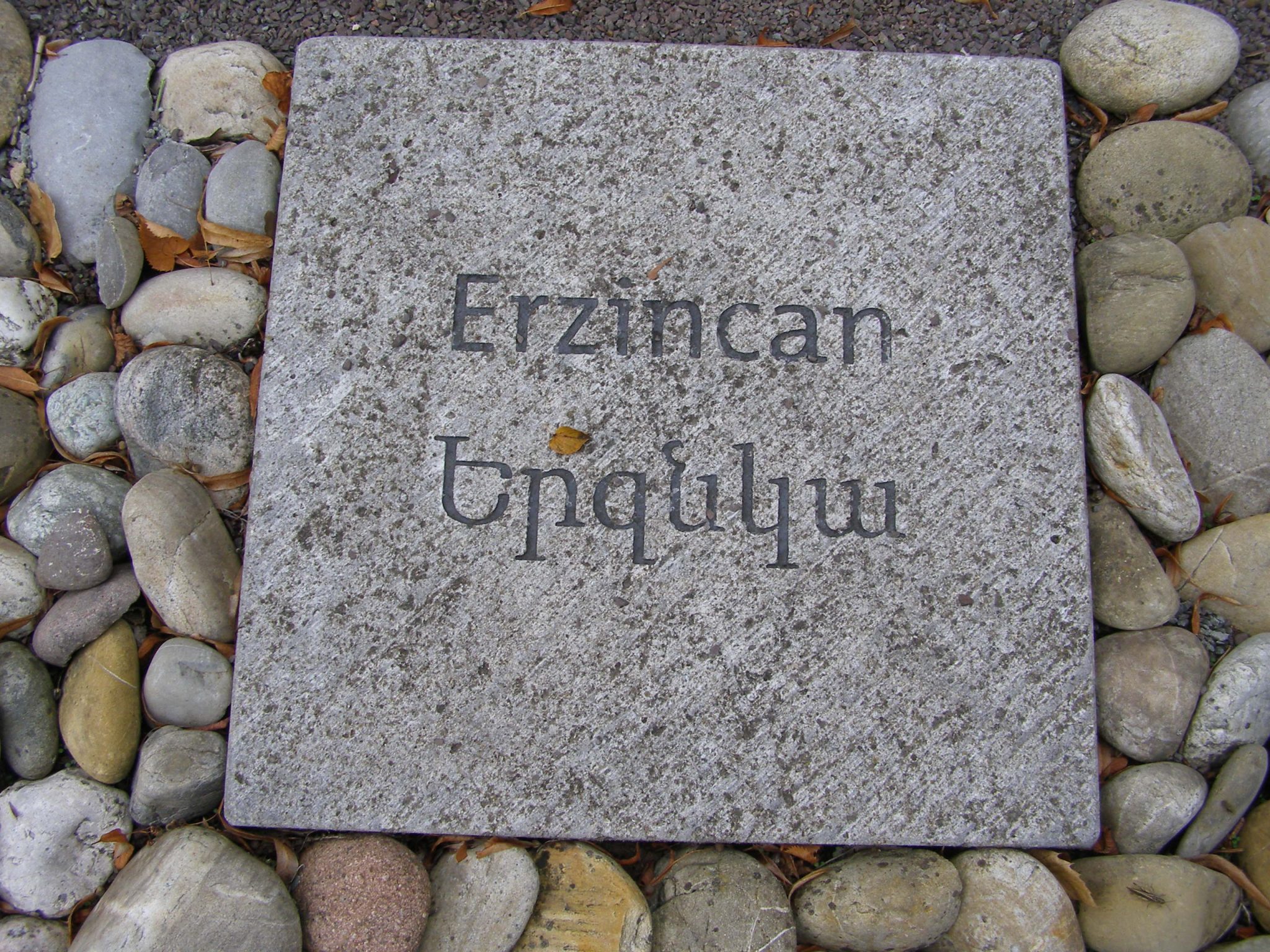
Population
On the eve of the First World War, there lived 25,795 Armenians in 38 localities of the kaza of Erzincan, maintaining 53 churches, 24 monasteries and 37 schools with an enrolment of 3,863 pupils.[1]
Destruction
The 30,000 Armenian villagers from the Erzurum plain were deported in three large caravans to Mamahatun. They were exterminated near Erzincan by a Special Organizationsquad.[2]
On 23-25 May 1915, the mutessarif of Erzincan, Memduh, at the head of the gendarmes and bandits (some 12,000 men), took over the Armenian villages (some 60 in number) in the region. The men were systematically shot or their throats cut in pits dug ahead of time, while the women and children were dispatched and placed in the Armenian cemetery of Erzincan.[3]
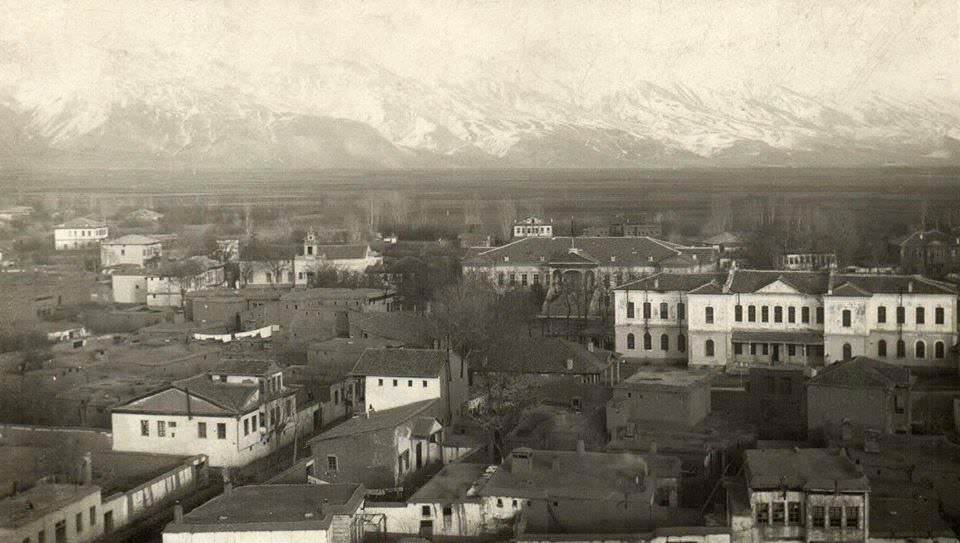
City of Erzincan / Երզնկա – Yerznka
Erzincan is located west of the Erzincan plain, on the right bank of the Western Euphrates River. In ancient times it was located directly on the Euphrates, but due to earthquakes the city had to be moved 2 km north. The ruined district was called the Old City. In the area of Erzincan there are hot water springs, with which some districts of the city were heated. Due to the favorable climate, cotton has been successfully grown.
Administration
In the late Middle Ages, after the third division of Armenia (1555), Yerznka/Erzincan passed to the Ottoman Empire, administratively entering the Erzurum eyalet.
Toponym
Acilisene, the ancient city that is now Erzincan, was the site of the Peace of Acilisene by which in 387 A.D. Armenia was divided into two vassal states, the smaller one dependent on the Byzantine Empire and a larger one dependent on Iran. This is the name (Ἀκιλισηνή in Greek) by which it was called by Strabo in his Geography, 11.4.14. The origin of the word is disputed, but it is agreed that the city was once called Yerez. For a while it was called Justinianoupolis in honour of Emperor Justinian. In more recent Greek it has been called as Κελτζηνή (Keltzene) and Κελεζηνή (Kelezene).
In the Armenian language, Erzincan was known by the names of Yerez, Yeriza, Yerizavan, Yerznka, Arznka and others. The 5th-century Life of Mashtots called it Yekeghiats. In the more recent past, it was known in Armenian as Երզնկա (Yerznka).
Population
In the 13th century, according to the Venetian merchant and explorer Marco Polo, the population of Erzincan was homogeneous, consisting of almost only Armenians. In 1830 the number of the Armenian population reached 15,000. In 1880, Erzincan had 6,000 houses, of which 4,000 were Muslim and 1,800 were Armenian. According to the French geographer and orientalist Vital Cuinet, in the 1890s, Erzincan had a population of 23,000, of which 15,000 were Muslims, 7,500 Armenians, and the rest Greeks and others. On the eve of the 1915 Genocide, the population was 24,000, more than a third of whom were Armenians.[4]
Until 1914, Erzincan had four reading rooms, three libraries, one lay theater with 25 actors, three pharmacies (with three pharmacists), and two public baths. The city had 3 doctors, 2,500 students and 100 teachers.[5]
Notable Armenians
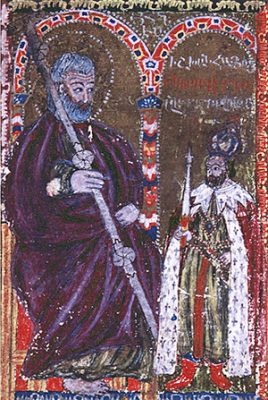
- Hovhannes Yerznkatsi (1225 / 1230 – 1293): Archimandrite; bibliographer, scholar, philosopher, orator
- Kostandin Yerznkatsi (1250-1314) : Poet, one of the most prominent figures of Armenian medieval poetry.
- Martiros Yerznkatsi (15th century): Traveller
- Amir Davit (15 th century): Historian
History
Erzincan is an ancient settlement, first mentioned in 8th century B.C. Urartian cuneiform inscriptions. It was then an urban temple community, called Yerez or Yeriza since the 1st century B.C.
In the pre-Christian period Yerez was one of the most important religious centers. Here was the main temple of the Armenian goddess Anahit, venerated with a golden statue. On the left bank of the Euphrates River, in front of Yerez, there were the large Mehyan estates where white heifers were sacrificed. The temple possessed a huge number of animals, treasures and other valuables. Every year on the 15th of Navasard, the feast of Anahit was celebrated here. The Roman historian Pliny the Elder in his Natural History testifies that in 35 A.D., General Antonios, capturing Yerez, broke the golden statue of Anahit and “divided it among the commanders”.
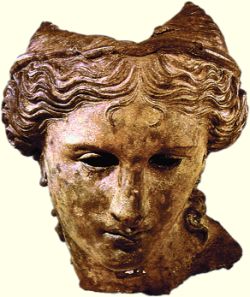
Later, a new statue of Anahit was erected there. During the spread of Christianity, King Trdat III and Gregory the Illuminator (Grigor Lusavorich) completely destroyed the shrine of Yerez. In its place a church dedicated to Mary was erected.
After the spread of Christianity, Yerznka became one of the prominent centers of the new religion, an episcopal settlement. With the first division of Armenia (387), the city passed to Byzantium and became the capital of King Arshak III. The fortified city of Justinianoupolis was founded by Emperor Justinian not far from Yerznka. In the 7th century Yerznka was conquered by the Arabs, in 885 it became part of the Armenian Bagratuni kingdom. At the end of the 10th century Yerznka was conquered by the Byzantines, in 1057 by the Seljuk-Turks. In 1243, the Mongols defeated the army of Sultan Ghiateddin of Iconium near the village of Chmankatuk, then captured Yerznka, wreaking havoc on the city. According to the Armenioan historian Kirakos Gandzaketsi, only “my little child and my daughter were rescued and taken captive.”
In the 1360s and 1370s, Yerznka developed and became a significant city. Later, it was ruled by Timur Lenk (1394), the Ak and Kara-Koyunlu tribes, and from 1514 by the Ottoman Turks.
Destruction
In the 1890s, the Armenian cultural and economic life of Erzincan was disrupted. On 7 October 1895, the local authorities provoked the Muslim mob, which attacked the shops, workshops and kiosks of the Armenians in the Erzincan market. More than 100 Armenians were killed that day.
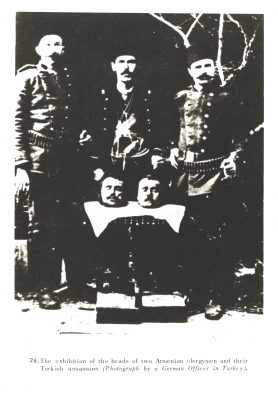
Source: “Shorovrdi dzayn” (“People’s Voice”), June 1920, taken from: Lord Bryce: Haykakan charderu pastaturtere (The Treatment of Armenians, Armen. ed.). Mas 1 (Part 1), K. Polis (Constantinople) 1920, p. 143.
By order of the mutesarif of the sancak, Memduh, the Armenians of Erzincan were deported in May 1915 and almost completely died in the Kemah gorge, which was one of the two most important slaughter-sites run by the Special Organization. Few managed to take refuge in the nearby mountains and forests.
On 1 January 1915, the vicar of Erzincan, Sahag Odabachian (also Odabashian), was murdered on the main road from Sivas to Erzincan in the Kanlıdere region of the kaza of Suşehir, by members of the Special Organization.[6]
Among the numerous slaughter-sites run by the Special Organization, the two most important were located in gorges—those of Kemah, to the south-west of Erzincan on the Euphrates, where tens of thousands of men were exterminated in May and June 1915 under the direct supervision of Dr. Bahaeddin Şakir, Head of the Special Organization; and those of Kahta, in the mountains to the south of Malatya, through which 500,000 deportees passed.[7]
On 18 May 1915 the first convoy of deportees from the prefecture of Erzincan departed. On 21 May 19115, the local authorities prepared a list of the first convoy of deportees from Erzincan, comprising 60 families. On 25-27 May the authorities gathered the Armenian population of Erzincan in the Armenian cemetery of Kuyubaşı, situated about fifteen minutes from the town. The evening of Thursday, 27 May, the entire population of the town and the villagers from the surrounding areas was interned under the surveillance of Special Organization bands. The deportees were regrouped by quarter and the men
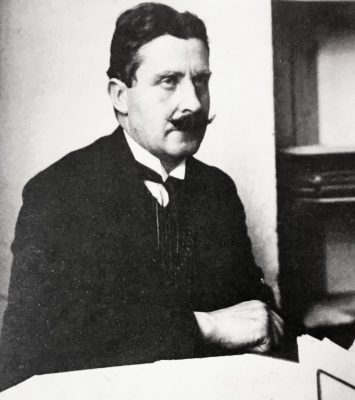
from the ages of forty to fifty, were separated, then massacred by the gendarmes and the bands. The remainder was sent on 28 May, under the supervision of Halet Bey, to the neighboring gorges of Kemah, in small groups leaving in one-hour intervals in order to escape detection. The deportees’ throats were slashed and they were thrown into the Euphrates by Special Organization squads commanded by Cafer Mustafa. Hundreds of women and children also jumped together over the edge. Infants of six or seven months of age were collected in the villages of the plain, tied in sacks, and thrown into the Euphrates.[8]
On 14 June 1915, General Mahmud Kamil, Commander of the Third Army, ordered the internment of the Armenian conscripts of the labor battalions of Erzincan in the town’s barracks. Each day, they were bound together in small groups and brought toward the east to the bridge at Cerbeleg, where they were shot and thrown into ditches dug in advance. The conscripts of the region working in the labor battalions were massacred at two locations. Around 5,000 were assassinated on a plain located slightly to the east of Erzincan and thrown into mass graves. A second group of approximately the same size was destroyed in the gorges of Sansar, located about eight hours to the east of Erzincan near the Tercan kaza boundaries. Around 15,000 elderly individuals of the province were exterminated at the same site.[9]
On 12 July 1916, Russian troops occupied Erzincan. About 3000-4000 Armenians from different places gathered there. On 5 December 1917, a ceasefire was signed in Erzincan between the ‘Transcaucasian Commissariat’ and the Ottoman forces. Under the pretext of the incidents between the Muslim and Christian population living in the occupied territory of the Caucasus army, the Ottoman command, violating the ceasefire, ordered the troops to invade Transcaucasia. In February 1918, they recaptured Erzincan. The Armenian population, who had taken refuge there, left the city with the retreating Armenian volunteers. The people of Erzincan who survived the Ottoman Genocide and their descendants moved to Soviet Armenia, USA, France, Egypt, Lebanon, Greece, Iraq, and elsewhere.[10]
From 1916 to 1922, the Erzincan region was the deportation destination for numerous Greek Orthodox men from Keris (1916), Sana (1920), Meliananton (1920), Batlama (1920), Belediyesi (June 1920), Tirebolu (Dec. 1920), Zurnatzanton (1921), Belen (Grk.: Kato Pelen, 600 persons, 1921), Kumluca (1921), Ouz (c. 1921). Greeks were deported from Erzincan to Germir in 1919.[11]
